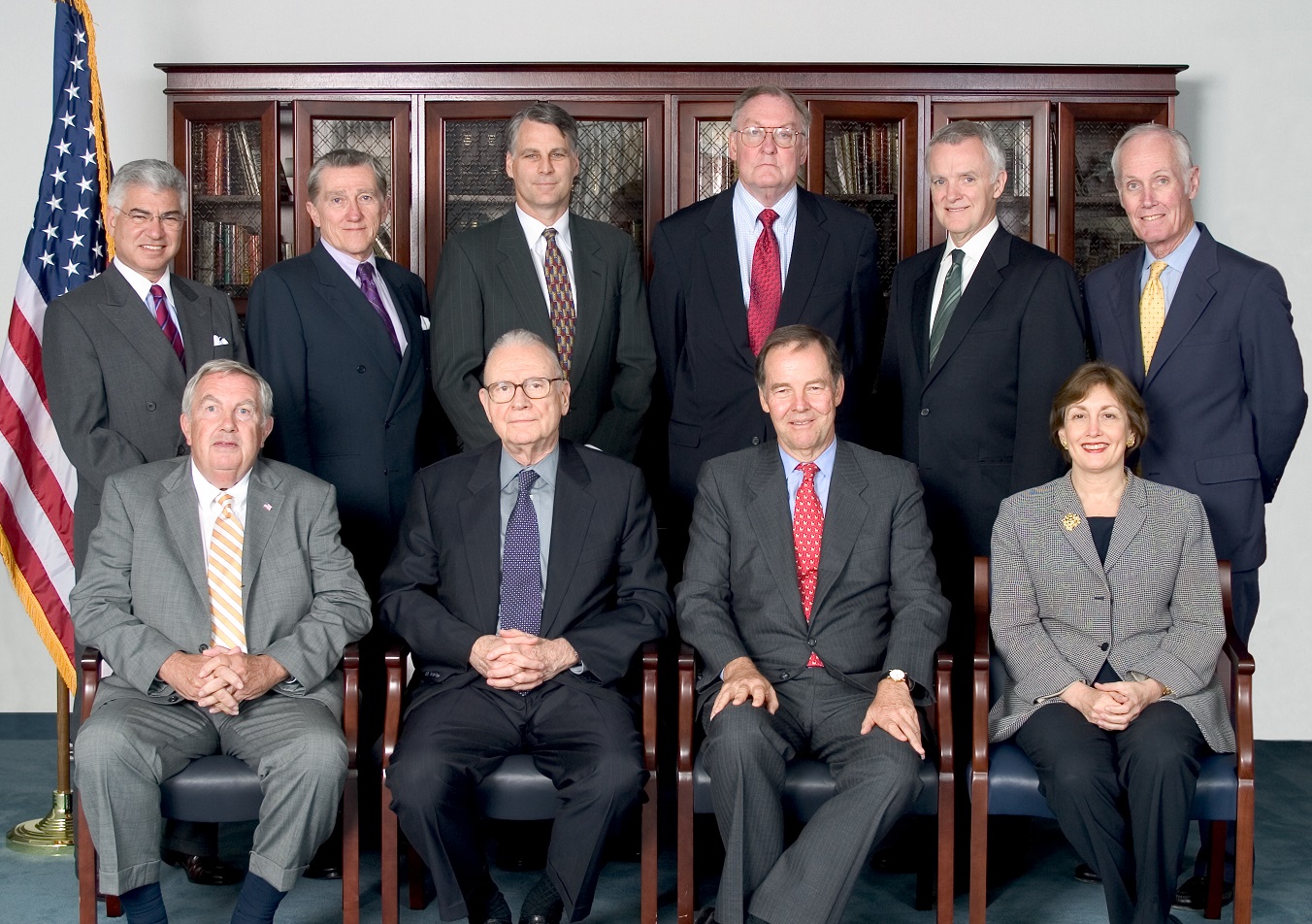Bipartisan Investigations: How the 9/11 Commission Did It
Whatever your political outlook, the ferment surrounding last year’s presidential election raises important, unanswered questions: What, precisely, did the Russians do, and were any Americans involved? Were members of presidential campaigns or transition teams recorded on foreign-intelligence or criminal wiretaps? If so, under what legal authority? Were their identities disseminated within the government? If so, for what purpose? And how did classified information about such wiretaps make its way into the press?

Published by The Lawfare Institute
in Cooperation With

Whatever your political outlook, the ferment surrounding last year’s presidential election raises important, unanswered questions: What, precisely, did the Russians do, and were any Americans involved? Were members of presidential campaigns or transition teams recorded on foreign-intelligence or criminal wiretaps? If so, under what legal authority? Were their identities disseminated within the government? If so, for what purpose? And how did classified information about such wiretaps make its way into the press?
We hope that official investigations will generate solid answers to all of these questions. Critically, however, in today’s polarized environment, those answers will be able to reassure Americans across the political spectrum only if they are the product of a bipartisan investigation. Absent bipartisan agreement, it is too easy for partisans on both sides to dismiss undesired facts and conclusions as the product of a political agenda. And only a near-universally accepted factual account of these issues can begin to narrow the partisan rift opened by the debate over Russian active measures and alleged surveillance.
The turbulent events of last week are yet another reminder of how difficult it is to maintain bipartisanship in roiling political seas. Yet there are precedents—most notably, the 2003-2004 investigation conducted by the 9/11 Commission. Through the rosy lens of hindsight, it is easy to forget the immense partisan stakes attending the Commission’s work. Would the Bush Administration, or specific officials, be blamed for the 9/11 attacks? Would the Clinton Administration? What would the Commission say about the Iraq War?
Against the odds, the Commission managed to avoid degenerating into a partisan melee. The 9/11 Commission Report was unanimous, with no minority or dissenting views. That unanimity is among the reasons—and is perhaps the preeminent reason—why the Report achieved bipartisan credibility. During the 2004 presidential campaign both nominees, George W. Bush and John Kerry, committed to implementing the Commission’s recommendations. Ultimately, almost all of them were adopted.
Leadership
The most important factor in preserving bipartisanship was the leadership provided by Chairman Tom Kean and Vice Chair Lee Hamilton. Their personal qualities and character were vital, but they also made tactical choices that set a tone of bipartisanship, which permeated the entire Commission. Most importantly, their approach established a norm against overt partisanship within the Commission. It also built public confidence in the Commission’s work across the political spectrum.
Perhaps the most important element of this effort was the emphasis on building relationships within the Commission. The Chair and Vice Chair, as well as other Commissioners, hosted private dinners at which members got to know one another as individuals. They worked to humanize relations across the aisle. The Commissioners all had a wealth of political stories, and told jokes, often at their own expense. Mirth in the social setting built collegiality outside it.
Critically, Kean and Hamilton determined from the beginning to work as a team in their management of the commission. They made key strategic and managerial decisions about the Commission’s investigation jointly. And they resolved potential disagreements privately, presenting a united front to the public and the press. Wisely, Congress exempted the Commission from the Federal Advisory Committee Act, which requires multi-member boards to meet in public. That helped enable quiet trust-building away from political pressures.
The Commission also sought to ensure that members’ media appearances did not generate conflict or partisan antagonism. To demonstrate and reinforce a bipartisan approach, the Chair and Vice Chair consistently held joint public appearances. They also encouraged other Commissioners to appear on television in bipartisan pairs, rather than as individuals.
Focus on the Facts
The Commission’s statutory mandate also helped keep its work on a bipartisan path. The law that established the Commission, Public Law 107-306, emphasized that its mission was, above all, to find the facts. The statute instructed the Commission to “examine and report on the facts and causes” of the attacks, to identify the supporting “evidence developed by all relevant governmental agencies,” to “make a full and complete accounting of the circumstances surrounding the attacks,” and to “investigate and report to the President and Congress on its findings, conclusions, and recommendations for corrective measures that can be taken to prevent acts of terrorism.”
Guided by this mandate, the Commissioners determined to focus on establishing the undisputed facts, before deriving lessons from them. This approach allowed trust to develop before the Commission entered into the more subjective parts of its work—making judgments about why the attacks succeeded, assigning responsibility, and formulating recommendations. Having a shared factual record also provided a common frame of reference for making these potentially controversial judgments.
One thing the Commission did not do was referee which presidential administration was most to blame for allowing the 9/11 plot to succeed. Instead, on issues like the Clinton Administration's pursuit of Osama bin Laden and the Bush Administration’s handling of terrorism in its first eight months in office, the report focused on presenting the relevant facts rather than judging the protagonists through the lens of hindsight. Some criticized this decision, arguing that the Commission had let one administration or the other off the hook. But given the fraught political environment during the 2004 campaign, this approach was essential for attaining unanimity.
Other Elements
There are certain features of the 9/11 Commission experience that may not generalize to other inquiries. Most obvious is the exceptional magnitude of the tragedy that the nation suffered on September 11, 2001, which produced extremely high public engagement and universal demand for answers. It also powerfully motivated Commissioners and staff to produce a report that would satisfy all Americans, regardless of party.
The Commission’s organic statute, and the managerial flexibility it permitted, also contributed to bipartisanship, but in ways not easily generalizable to the present congressional inquiries or a hypothetical select committee. Most importantly, Public Law 107-306 provided for equal Republican and Democratic representation on the Commission. The Chair and Vice Chair then chose to hire a nonpartisan staff, whose members would work for the Commission as a whole, rather than separate majority and minority and staffs. Staff were hired by mutual agreement of the Chair and Vice Chair; political affiliations were never a consideration, only substantive expertise. There were no special assistants or designated staff members assigned to individual Commissioners.
Hearings
As a new institution with no prior track record, the Commission had to establish its own public credibility and stature. Initially, it faced considerable skepticism and outright criticism, including among the 9/11 families. To build credibility, the Chair and Vice Chair decided they needed to bring the public along as part of the investigation. As the Commission developed information, it held hearings to bring forward emerging findings of fact. Each hearing began with a staff statement, establishing the factual record and context, followed by witnesses elucidating those same events. The hearings were enormously important in building public interest and winning support: By the time the Commission issued its report, 70% of the public said they were following its work “closely.”
The hearing process also had its dangers, as intense public attention raised the partisan stakes. One particularly challenging period surrounded Richard Clarke’s testimony before the Commission, which coincided with the publication of his memoir Against All Enemies and an appearance on 60 Minutes. Clarke’s testimony had immediate implications for the 2004 presidential election: He accused the Bush Administration of neglecting the al Qaeda threat before the 9/11 attacks and then erroneously focusing on Saddam Hussein’s Iraq. Partisan splintering among the Commissioners—and thus failure—appeared possible. Credit here belongs to the Chair and Vice Chair, and Commissioners Slade Gorton and Jamie Gorelick, who worked hard to persuade their colleagues to move past partisan differences—which were real and often raw—to come together on behalf of a result the country desperately wanted and needed.
It was a close-run thing. Ultimately, however, the Commission held together and achieved unanimity—and that bipartisan unity made all the difference. It ensured the Commission’s report a wide audience; it created momentum for the Commission’s 41 recommendations, most of which were adopted; but most importantly, it established a national consensus about the events and causes of 9/11.
All Americans, Republicans and Democrats, should hope that today’s investigations are able do the same.
Chris Kojm was Deputy Executive Director of the 9/11 Commission and President of the 9/11 Public Discourse Project, the Commission’s nonprofit successor organization. Adam Klein served on the staff of the Public Discourse Project.






